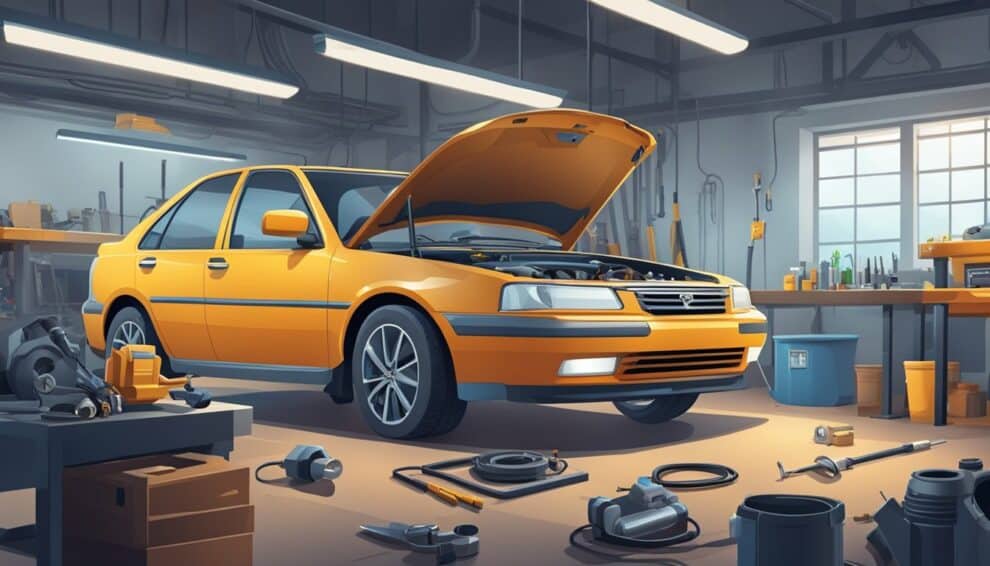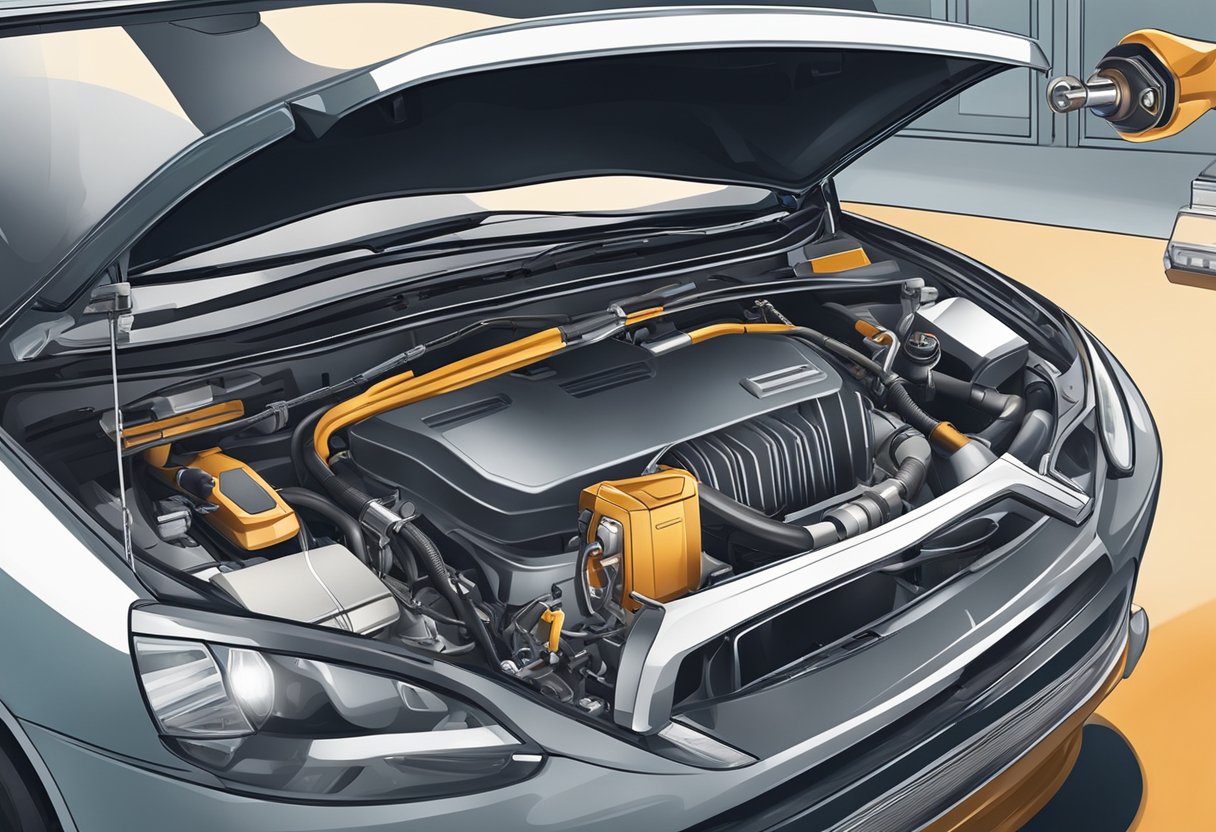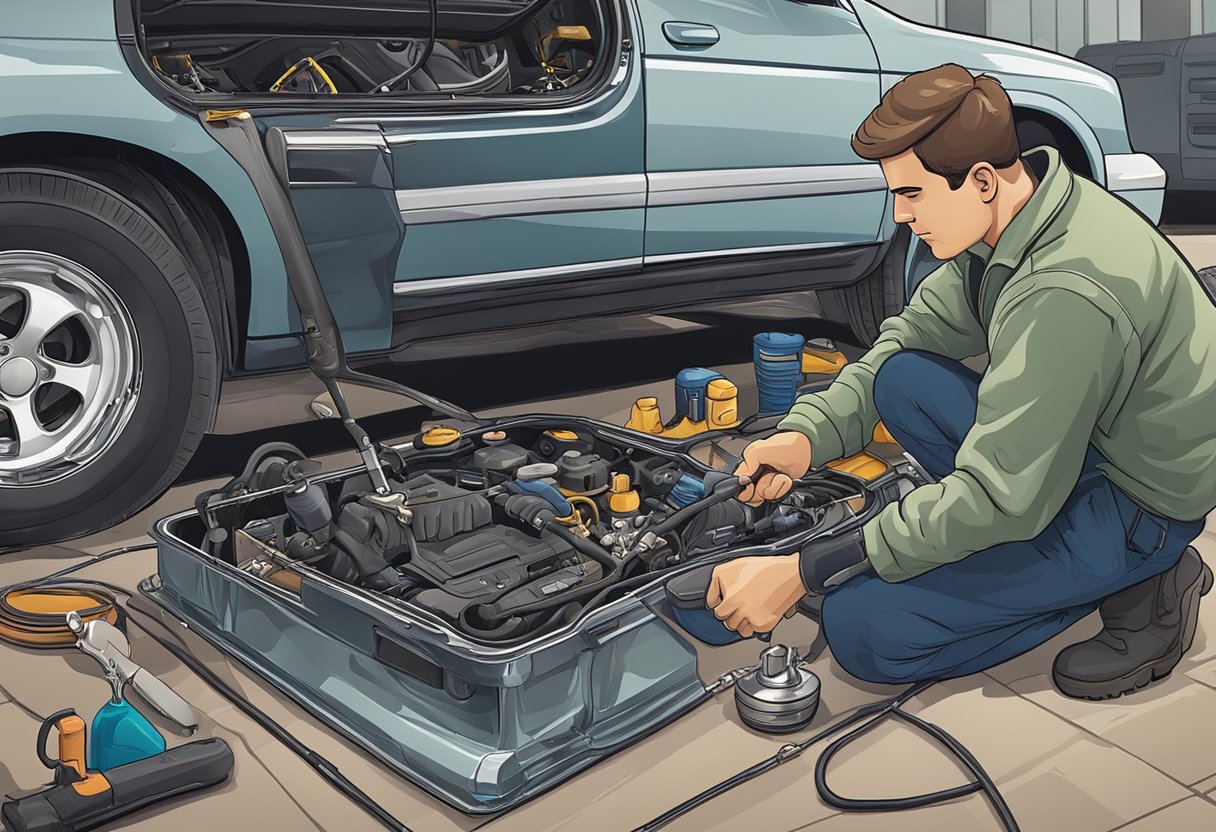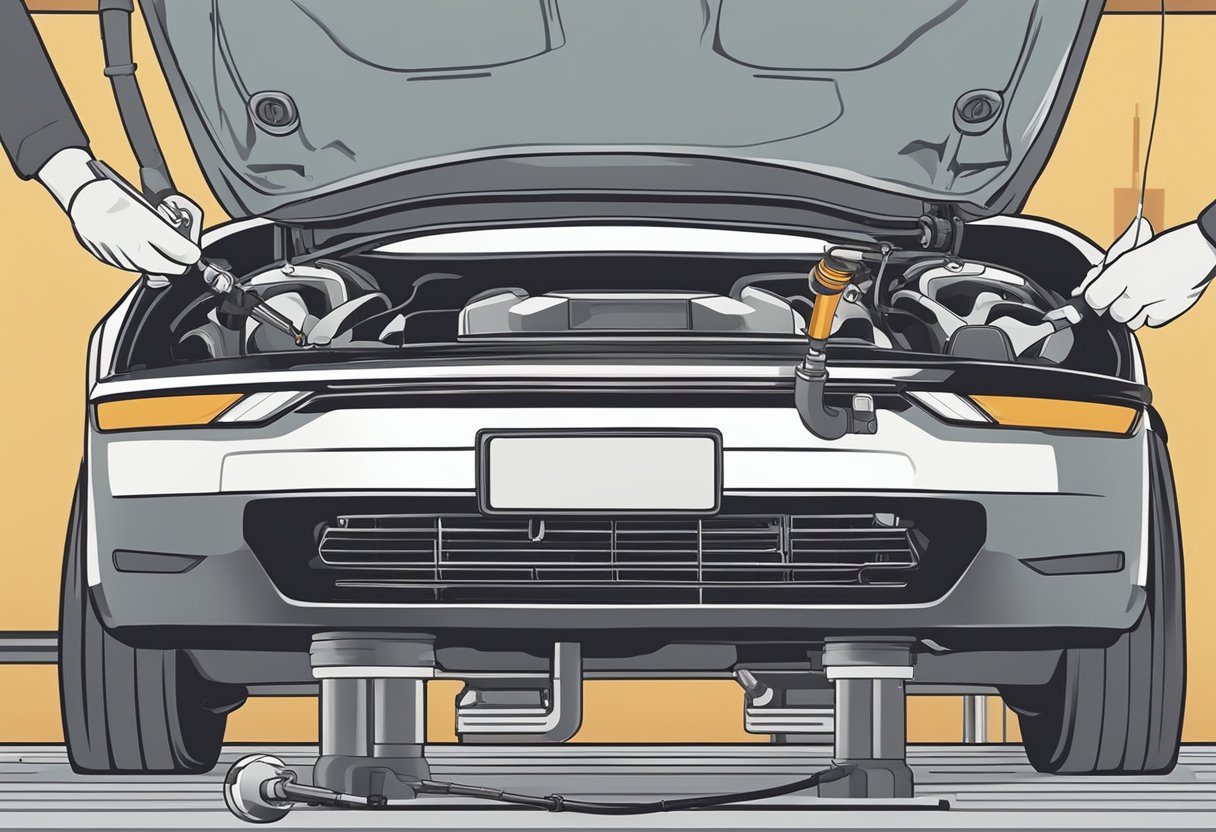If you own a car, you may have experienced the frustration of seeing a warning light on your dashboard.
One such warning light is the P0140 code, which indicates a problem with your oxygen sensor.
This code specifically means that the sensor is not detecting any activity, which can affect your car’s performance and fuel efficiency.
The oxygen sensor is an important component of your car’s engine management system.
It measures the amount of oxygen in the exhaust gases and sends this information to the engine control module (ECM).
The ECM uses this data to adjust the air/fuel mixture, ensuring optimal performance and fuel efficiency.
When the oxygen sensor is not detecting any activity, it can cause a variety of issues, including decreased fuel efficiency, rough idle, and even engine damage if left unchecked.
In this article, we’ll explore the causes of the P0140 code and some possible fixes to get your car back on the road.
Understanding P0140 Code
Definition and Meaning
If your vehicle’s check engine light is on and you have retrieved the P0140 code, it means that the oxygen sensor located on the bank 1 sensor 2 is not detecting any activity.
This sensor is responsible for measuring the oxygen levels in the exhaust system and providing feedback to the engine control module (ECM) to adjust the air/fuel ratio for optimal performance and fuel efficiency.
Causes of No Activity in Oxygen Sensor
There are several reasons why the oxygen sensor may not be detecting any activity. Some common causes include:
- Faulty oxygen sensor: The sensor may be malfunctioning or have failed completely, preventing it from detecting any activity.
- Wiring issues: The wiring connecting the oxygen sensor to the ECM may be damaged or disconnected, preventing the sensor from sending any signals to the ECM.
- Exhaust system leaks: Leaks in the exhaust system can allow oxygen to enter the system, causing inaccurate readings from the oxygen sensor.
- Failed ECM: In rare cases, the ECM may be faulty and not able to receive signals from the oxygen sensor.
If you suspect that your vehicle has a faulty oxygen sensor or wiring issue, it is important to have it diagnosed and repaired as soon as possible to prevent further damage to the engine and to ensure optimal performance and fuel efficiency.
Diagnosing the Issue
Diagnostic Tools Required
Before you start diagnosing the P0140 code, you will need the following diagnostic tools:
- OBD-II scanner
- Digital multimeter
- Wiring diagram for your vehicle
- Oxygen sensor socket
- Torch
Step-by-Step Diagnostic Procedure
Here is a step-by-step diagnostic procedure to help you diagnose the P0140 code:
-
Connect the OBD-II scanner to your vehicle’s diagnostic port and retrieve the code.
-
Check the wiring harness and connectors for any visible damage, corrosion, or loose connections.
Make sure the wiring is not shorted or grounded.
-
Use the digital multimeter to check the voltage and resistance of the upstream and downstream oxygen sensors.
The upstream sensor should produce a voltage signal that fluctuates between 0.1 and 0.9 volts, while the downstream sensor should produce a steady voltage signal around 0.5 volts.
If the readings are outside of these ranges, the sensor may be faulty.
-
Inspect the oxygen sensors for any physical damage, such as cracks or contamination. Replace the sensor if necessary.
-
Check the exhaust system for leaks, as this can cause false readings from the oxygen sensors.
-
Use the wiring diagram to check the oxygen sensor circuit for any open or short circuits. Repair any damaged wiring as necessary.
-
Clear the code and test drive the vehicle to see if the code returns. If the code does not return, the issue has been resolved.
By following this diagnostic procedure, you can effectively diagnose and fix the P0140 code.
Common Fixes for P0140
If you have a P0140 code, it means that your oxygen sensor is not detecting any activity.
This can cause a number of issues with your vehicle, including poor fuel economy, rough idle, and even engine damage.
Fortunately, there are several common fixes for this problem that you can try.
Replacing the Oxygen Sensor
The most common fix for a P0140 code is to replace the oxygen sensor.
This sensor is responsible for measuring the amount of oxygen in your exhaust system and sending that information to your vehicle’s computer.
If the sensor is not working properly, it can cause a number of issues with your vehicle’s performance.
To replace the oxygen sensor, you will need to locate it on your vehicle’s exhaust system.
The exact location will vary depending on the make and model of your vehicle, but it is usually located near the catalytic converter.
Once you have located the sensor, you will need to disconnect the electrical connector and unscrew it from the exhaust system.
Install the new sensor and reconnect the electrical connector.
Inspecting and Repairing Wiring and Connectors
Another common fix for a P0140 code is to inspect and repair any wiring or connectors that may be causing the problem.
Over time, the wiring and connectors on your vehicle can become damaged or corroded, which can cause issues with the oxygen sensor.
To inspect the wiring and connectors, you will need to locate them on your vehicle.
They are usually located near the oxygen sensor or along the exhaust system.
Look for any signs of damage or corrosion, and repair or replace any damaged components.
Checking for Exhaust Leaks
Finally, it is important to check for any exhaust leaks that may be causing the P0140 code.
An exhaust leak can allow air to enter the exhaust system, which can cause issues with the oxygen sensor.
To check for exhaust leaks, you will need to inspect your vehicle’s exhaust system for any signs of damage or corrosion.
Look for holes or cracks in the pipes or muffler, and repair or replace any damaged components.
By following these common fixes for a P0140 code, you can help to improve the performance of your vehicle and avoid any potential engine damage.
Preventive Measures and Maintenance
Routine Sensor Maintenance
Regular maintenance of your vehicle’s oxygen sensors is essential to prevent the P0140 code from appearing.
The oxygen sensors should be checked and cleaned at least once a year.
This can be done by removing the sensor and cleaning it with a wire brush or a special cleaning solution.
It is also important to check the electrical connections of the oxygen sensors regularly.
Loose or corroded connections can cause the sensor to malfunction and trigger the P0140 code.
Avoiding Common Causes
There are several common causes of the P0140 code that can be prevented with some basic maintenance.
One of the most common causes is a dirty air filter.
A dirty air filter can cause the engine to run rich, which can damage the oxygen sensor and trigger the P0140 code.
Another common cause of the P0140 code is a leak in the exhaust system.
A leak can allow air to enter the exhaust system, which can cause the oxygen sensor to malfunction.
Regular inspection of the exhaust system can help prevent leaks from occurring.
Finally, it is important to use the right type of fuel in your vehicle.
Using low-quality fuel can cause the engine to run rich, which can damage the oxygen sensor and trigger the P0140 code.
Using high-quality fuel can help prevent this from happening.
By following these preventive measures and performing regular maintenance on your vehicle’s oxygen sensors, you can help prevent the P0140 code from appearing and ensure that your vehicle runs smoothly.
Professional Assistance
If you are unable to fix the P0140 code on your own, it may be time to seek professional assistance.
Here are some things to consider before doing so.
When to Seek a Mechanic’s Help
If you have attempted all of the fixes mentioned previously and the P0140 code still persists, it may be time to seek help from a mechanic.
Additionally, if you are not comfortable working with automotive electronics or do not have the necessary tools, seeking professional assistance may be the best option.
Benefits of Professional Diagnosis
A mechanic has access to specialized equipment and knowledge that can help diagnose the root cause of the P0140 code.
They can also provide a more thorough inspection of the vehicle to ensure that there are no other underlying issues that may be causing the code to appear.
While seeking professional assistance may come at a cost, it can save you time and money in the long run by ensuring that the issue is properly diagnosed and fixed.
It is important to choose a reputable mechanic who has experience with oxygen sensor issues and can provide a clear estimate of the cost of repairs.
Overall, seeking professional assistance can be a wise decision if you are unable to fix the P0140 code on your own.
As an Amazon Associate we earn from qualifying purchases.













